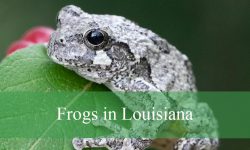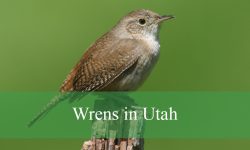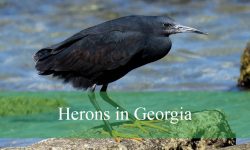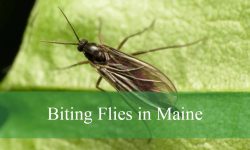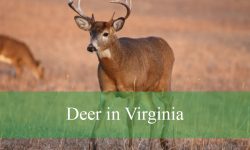Wild hogs are not natural residents of Arkansas, yet they have firmly embedded themselves across the state’s forests, wetlands, and farmlands. Their presence is growing silently and rapidly, with few outside of agriculture and wildlife management circles fully understanding the scope of their spread. Originally brought over by early European settlers and further amplified by escaped domestic pigs, these feral swine are now among the most destructive invasive species in the region.
Their population boom is driven by reproductive efficiency—each sow can produce multiple litters annually, with several piglets per litter. They are highly adaptive, intelligent, and elusive, making eradication a near-impossible task once they’ve established a presence in an area. Over time, they have moved from isolated pockets into nearly every corner of rural Arkansas.
Despite their impact, the average resident may hear little about what’s really happening. Public messaging remains limited, and in hunting communities, wild hogs are sometimes even seen as a resource. But this widespread tolerance hides a deeper reality—one that continues to alter Arkansas’s environment, agriculture, and public health in profound ways.
The Environmental Toll Hidden Beneath the Surface
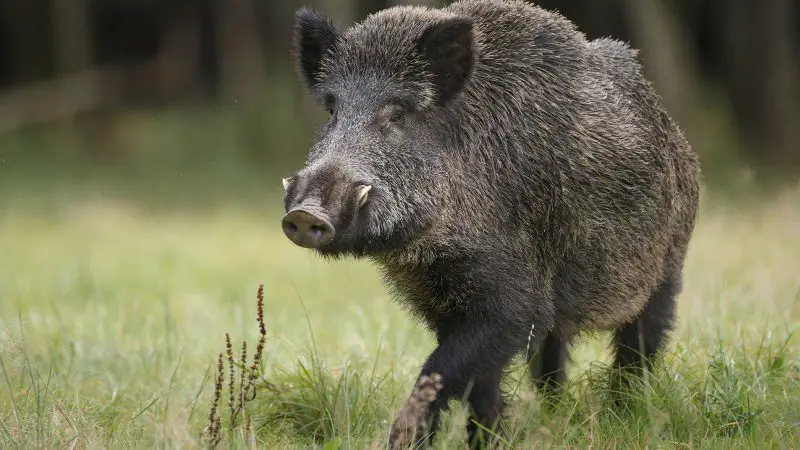
Wild hogs are ecological bulldozers. Their habit of rooting through soil in search of food leaves deep scars across the land. This behavior disturbs native plants, damages soil structure, and invites erosion. In wetlands, they disrupt fragile aquatic ecosystems by muddying streams, trampling vegetation, and disturbing wildlife nesting areas.
The problem intensifies in agricultural zones. Crops like corn, soybeans, and rice are favorite targets. Entire sections of fields can be flattened or dug up overnight, leading to millions in economic losses for local farmers. These losses are rarely reimbursed and often go unreported, further masking the scale of the problem.
But it’s not just plants that suffer. Wild hogs are aggressive omnivores and compete directly with deer, turkeys, and smaller mammals for food. They also consume eggs, reptiles, amphibians, and ground-nesting birds. Their presence shifts the balance in many ecosystems, causing native species to decline or relocate—transformations that can take generations to reverse.
What Many Hunters Won’t Say Out Loud
In the hunting world, wild hogs offer a year-round opportunity for sport. With no seasonal restrictions or bag limits in Arkansas, many hunters have embraced the challenge. The meat is sought after, and the thrill of night hunting adds a layer of excitement that few other animals provide. On the surface, it’s a win-win.
Yet behind this enthusiasm lies a quieter truth. Some hog populations are suspected of being intentionally spread to new locations for hunting purposes—an illegal act that only deepens the crisis. Whether through rumor or fact, the belief that hogs have been released in new territories persists, suggesting a darker side to the sport.
Furthermore, vocalizing the full extent of the destruction caused by wild hogs could undermine the very activity that some hunters enjoy. Acknowledging the environmental, agricultural, and economic costs might trigger tighter regulations or coordinated eradication efforts—outcomes that certain segments of the hunting community might not welcome.
Hidden Dangers to People and Livestock
Beyond the environmental and agricultural concerns, wild hogs are a public safety issue. They are unpredictable, powerful, and capable of inflicting serious injuries. There have been multiple accounts in Arkansas of hogs charging at hikers, dogs, and even armed hunters. Their tusks are razor-sharp and can cause deep, sometimes life-threatening wounds.
Even more alarming are the diseases they carry. Wild hogs are known vectors of brucellosis, leptospirosis, swine influenza, and pseudorabies. These diseases can spread to domestic livestock, pets, and even humans, particularly those who come into contact with hog-contaminated water or meat. In rural areas, where feral and domestic animals often share the same environments, the risks multiply quickly.
Although state agencies monitor disease transmission, there is limited public awareness of the actual health threats. Many cases go undiagnosed or unreported, especially when small-scale livestock farms are affected. The result is a hidden layer of danger that remains largely unknown to the general public.
A False Sense of Control
At first glance, Arkansas appears to be actively managing the wild hog crisis. Trapping initiatives, education programs, and the formation of state task forces all indicate that efforts are underway. However, the underlying reality tells a different story. These efforts, though well-meaning, often fall short in scale, funding, or coordination.
Trapping, for example, removes a fraction of the population, often missing large family groups that simply relocate. Hunting, while popular, can scatter sounders and increase breeding rates. Poisoning is controversial and tightly regulated due to the risk it poses to non-target species, including pets and scavenging wildlife.
The truth is that despite localized successes, there has been no lasting reduction in Arkansas’s wild hog population. The animals continue to spread into new territories, including suburban fringes, where their presence becomes even harder to manage. Government reports speak cautiously, but among those on the front lines, there’s an acknowledgment: the state is losing ground.
The Ecological Shift That Few Are Watching
Wild hogs are causing a slow transformation of Arkansas’s natural areas. In state parks, national forests, and wildlife preserves, the damage is mounting. Uprooted soil disrupts water filtration, feeding patterns, and plant regeneration. In places like the White River and Cache River National Wildlife Refuges, hogs are altering ecosystems that have taken centuries to develop.
Many of these effects are subtle—until they aren’t. When nesting birds fail to hatch young for multiple seasons, or when a stream runs muddy for months, the ecological balance begins to break. Hogs may not be the only cause, but they are often the final straw in fragile environments already facing pressures from climate change and urbanization.
Biologists and ecologists have sounded alarms, but funding and public attention remain limited. In a world where conservation headlines are dominated by polar bears or tropical rainforests, the quiet collapse of native ecosystems in Arkansas gets little attention. Yet the truth is unfolding in the dirt, roots, and watersheds, reshaped by an animal few are willing to confront directly.
Climate and Geography Favor Their Expansion
One reason wild hogs thrive in Arkansas is geography. The state offers a nearly perfect combination of dense cover, mild winters, abundant food sources, and year-round water. These conditions not only support survival but encourage expansion. Where many animals struggle during the colder months, hogs continue to breed and forage.
Climate change adds another layer to their advantage. Warmer winters and extended growing seasons reduce mortality and increase habitat suitability. Changes in precipitation patterns may also drive hogs into new areas as they adapt to drier summers or flooded winters. The net result is an expanding range that creeps ever northward and uphill.
In a changing climate, few native species can compete with the hog’s raw adaptability. Their intelligence, speed, and physical resilience make them one of the most formidable animals to ever occupy Arkansas’s wild spaces. And with each season, their grip tightens.
Landowners in a Compromised Position
The people who deal with wild hogs most directly—private landowners—often face a complex web of decisions. While many suffer property damage and crop loss, others quietly benefit from hog-related hunting leases. This duality leads to inconsistent cooperation with state-led eradication programs and a general reluctance to speak publicly about the problem.
Some landowners prefer to handle hog issues privately, rather than allow state officials on their land. Others fear that reporting problems might reduce their land value or lead to unwanted restrictions. Still others quietly tolerate hogs to maintain hunter interest, especially in economically depressed areas where income opportunities are scarce.
This fragmented response means that hog control efforts are often reactive and piecemeal. The lack of a united front hampers statewide progress and allows hogs to exploit weak points in the system. Until incentives are aligned and trust is rebuilt between public agencies and private landholders, the current strategy will continue to falter.
The State’s Efforts and Their Unspoken Limits
To its credit, Arkansas has taken visible steps to confront the wild hog issue. Agencies have offered grants, technical assistance, and even equipment loans to help landowners trap or monitor hog activity. Public awareness campaigns have also ramped up in recent years, especially targeting rural counties where the problem is most severe.
However, the true scale of the crisis remains under-communicated. Many residents are unaware of how quickly hog populations are expanding, or how deeply they are embedded in the state’s ecosystems. Political considerations often limit the scope of messaging, especially when aggressive measures like aerial culling or chemical sterilization are considered.
Behind closed doors, there is increasing recognition that the current path is unsustainable. But moving toward a more assertive strategy requires public support, cross-agency collaboration, and long-term funding—resources that remain scarce in a state juggling multiple rural priorities.
Revealing What Lies Ahead
The wild hog problem in Arkansas is not going away. In fact, it’s accelerating. What was once a rural nuisance has become a statewide crisis with implications for agriculture, wildlife, health, and infrastructure. The more time passes, the more difficult—and costly—remediation becomes.
To confront this challenge, Arkansas must shift from managing symptoms to addressing causes. That means stronger laws against illegal transport, better coordination between hunters and conservationists, and sustained public education that cuts through apathy and misinformation. Most importantly, it requires honesty—a willingness to confront the uncomfortable truths that many have long chosen to ignore.
Because the hidden truths about wild hogs aren’t just inconvenient—they are shaping the future of Arkansas’s landscapes, ecosystems, and way of life.
Frequently Asked Questions About Wild Hogs in Arkansas
Are wild hogs native to Arkansas?
No, wild hogs are not native to Arkansas. They were introduced by European explorers and settlers, and later expanded due to escaped domestic pigs. Today, they are considered an invasive species causing widespread ecological and agricultural damage.
How fast are wild hog populations growing in Arkansas?
Wild hog populations in Arkansas are growing rapidly. A single sow can produce two litters per year with up to 12 piglets each. With high survival rates and few natural predators, their numbers can double in a matter of months in ideal conditions.
Why are wild hogs dangerous?
Wild hogs are dangerous due to their aggressive nature, sharp tusks, and ability to carry diseases such as brucellosis, leptospirosis, and pseudorabies. They pose threats to humans, livestock, pets, and native wildlife.
Can you hunt wild hogs year-round in Arkansas?
Yes, wild hogs can be hunted year-round in Arkansas. There are no closed seasons or bag limits on feral hogs, and night hunting is permitted under certain regulations. However, landowner permission is required for hunting on private property.
Do hunters intentionally spread wild hogs?
There have been reports and suspicions that some hunters or individuals may have illegally transported or released wild hogs to new areas to create hunting opportunities. This practice is illegal in Arkansas and contributes to the problem’s spread.
What damage do wild hogs cause to the environment?
Wild hogs root up soil, destroy native plants, trample wetlands, and compete with native species for food. They also consume bird eggs, amphibians, and small mammals, which disrupts entire ecosystems over time.
How do wild hogs affect farmers in Arkansas?
Farmers experience significant losses due to wild hogs destroying crops, irrigation systems, and fences. Corn, soybeans, rice, and even hay fields are especially vulnerable. Some farmers report damage reaching thousands of dollars annually.
What is the Arkansas state government doing to control wild hogs?
The Arkansas Game and Fish Commission and other state agencies have established task forces, trapping programs, and educational outreach to help control wild hog populations. However, these efforts face challenges such as funding limits, inconsistent cooperation, and the hogs’ adaptability.
Are there effective methods to eliminate wild hogs?
Trapping, aerial gunning, and coordinated hunting can reduce local populations, but long-term eradication is extremely difficult. Poisoning is controversial due to risks to non-target species, and partial removals can often lead to population rebounds.
How can landowners protect their property from wild hogs?
Landowners can install hog-proof fencing, participate in state-sponsored trapping programs, and allow responsible hunting on their land. Regular monitoring and rapid response to hog sightings are also key to limiting long-term damage.

